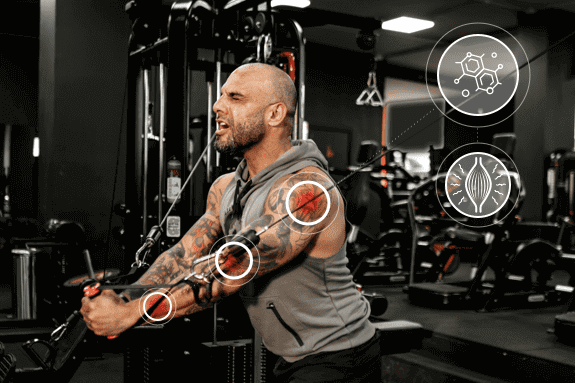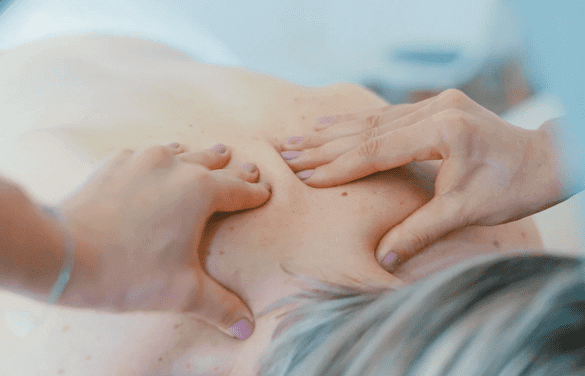Athletes, dancers and fitness enthusiasts alike know how important it is to rest between workouts, to let your body repair damaged tissue, flush metabolic waste and restore essential cellular metabolites. Time and nutrition will do the trick, but sometimes the demands of a rigorous schedule mean you need to accelerate recovery.
When time is of the essence, technology comes to the rescue with special tools and techniques to expedite the recovery process, so you can get back in the game.
or

Whether you’re doing CrossFit or playing for the NFL, your muscles, joints and connective tissues take a beating on a regular basis. In fact, overload is the primary underlying principle behind building a stronger, more resilient body. As you challenge your body’s systems, they adapt by building stronger tissues, enhancing energy storage, altering hormonal processes and speeding up metabolism. But all those adaptations take time, and they will not take place at all if you don’t give your body time to recover.

An important part of recovery is the removal of metabolic waste. As you challenge your muscles and cardiovascular system, your cells produce ATP (adenosine triphosphate) at an accelerated rate. ATP is the energy molecule that fuels muscular contraction. Your cells generate heat, water, carbon dioxide and lactic acid as byproducts of energy production. Metabolic waste must be removed from your muscles via your lungs and lymphatic system, so you can continue to generate ATP.

In addition to eliminating waste, your body has to repair micro tears to muscle cells and fascia that are a natural side effect of overload. During the repair process, your muscle fibers become stronger, with a greater capacity to store glycogen and phosphocreatine (PC), energy substrates necessary for ATP resynthesis. You also increase your number of capillaries and mitochondria, enhancing oxygen delivery to your cells and increasing their capacity for ATP production.
Removing waste and repairing muscle tissue takes time. If you continue to push your body without giving it time to recover, you will begin to lose ground, and you could fall victim to overtraining syndrome.
Symptoms of overtraining syndrome include:


Unless you stop training and let your body recover, you may begin to accumulate unwanted body fat, and increase your risk of metabolic disease and injury.
Making recovery a priority after every workout or event will keep you from falling into the downward spiral of overtraining syndrome. Happily, we live in a time where technology offers solutions to enhance and expedite recovery.
There are a lot of products on the market that claim to enhance recovery, but many of them are just gimmicks that do nothing but drain your bank account. Recently, technology is changing the recovery game by offering solutions that are clinically proven to work.

Athletes have long recognized the benefits of an ice bath after vigorous competition. Submerging your body in ice water for 15 to 45 minutes numbs pain, lowers your core temperature and causes your blood vessels to constrict, flushing excess fluid and waste products from your muscles.
Cryotherapy replicates the advantages of an ice bath without the discomfort. Using nitrogen vapor, your body is exposed to subfreezing temperatures for 3 minutes, eliciting the same vascular and cellular responses as an ice bath.
As your body warms again, fresh blood infuses your cells with oxygen and nutrients, so they can quickly begin the healing process. Cryotherapy can either be localized to focus on an injured area, or you can expose your entire body to subfreezing temperatures in a cryochamber.

Removing fluids and waste from your muscles can take days after a challenging training session. Delayed onset muscle soreness (DOMS) is the stiffness and soreness you feel in your muscles a day or two after your workout. It is thought to be caused by inflammation that exerts pressure on damaged cells.
Pulsating compression sleeves and massage guns speed up the removal of fluids and waste by pushing them out of the intercellular space and into your veins and lymphatic vessels, where they travel to your lymph glands and kidneys for elimination.
At NYDNRehab, we use the Normatech recovery system that provides dynamic compression to help flush fluids and waste out of the cells and into the veins and lymphatic vessels for removal.
Radial shock waves speed up the tissue healing process by increasing circulation to damaged and overworked cells. As more blood enters damaged tissues, it delivers the oxygen and nutrients your cells need to rebuild muscle and connective tissues. Shock wave therapy can also be effective for releasing trigger points, tiny knots of fascial tissue that can be painful and cause dysfunction.
Dry needling entails the insertion of a thin needle into myofascial trigger points to elicit the relaxation of knotted tissue. Dry needling means that no medication is injected, only a dry needle. Ultrasound guidance enables us to visualize deep tissue trigger points that cannot be seen or palpated on the skins surface, for accurate needle insertion and effective treatment.

Deep tissue massage works much like compression devices to flush out fluids and toxins from your muscles and move them into your lymph and circulatory systems for elimination. The cells are then replenished with oxygen- and nutrient-rich blood to promote healing.

Contact NYDNRehab today, and speed up recovery so you can get back in the game.
Pushing your body to its limits reaps incredible rewards for performance and overall fitness. But overtraining without adequate recovery can have the opposite effect. When you need to perform at your peak while maintaining a rigorous schedule, you can accelerate recovery at NYDNRehab with our high-tech recovery tools. Don’t fall victim to overtraining syndrome.

Dr.Kalika revolutionized foot and ankle care by using high resolution diagnostic ultrasonography for structural diagnosis, combined with with gait and motion analysis technology. Dr.Kalika’s motion and gait analysis lab is the only private lab in the US that features research-grade technology found only at top research universities, made available to patients in his private clinic.
 Dr. Yuri Brosgol
MD
Dr. Yuri Brosgol
MD
 Dr. Michael Goynatsky
DPT
Dr. Michael Goynatsky
DPT
 Dr. Daniela Escudero
DPT
Dr. Daniela Escudero
DPT
 Dr. Michelle Agyakwah
DC
Dr. Michelle Agyakwah
DC
 Dr. Tatyana Kapustina
L. Ac.
Dr. Tatyana Kapustina
L. Ac.
Dr. Lev Kalika is a world-recognized expert in musculoskeletal medicine. with 20+ years of clinical experience in diagnostic musculoskeletal ultrasonography, rehabilitative sports medicine and conservative orthopedics. In addition to operating his clinical practice in Manhattan, he regularly publishes peer-reviewed research on ultrasound-guided therapies and procedures. He serves as a peer reviewer for Springer Nature.
Dr. Kalika is an esteemed member of multiple professional organizations, including: